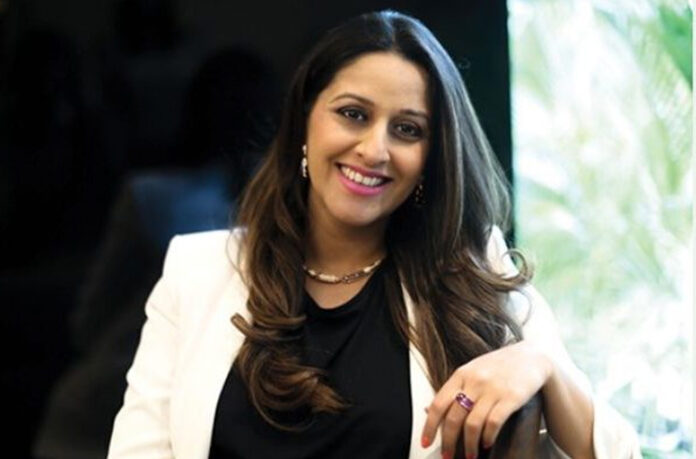The pandemic period has proved to be quite interesting for a lot of sectors. While it may have damaged a number of markets, the art market has actually thrived. Contrary to assumptions that the valuation of contemporary art pieces might have taken a beating during the pandemic times, the demand for the same has only increased in recent months. And the credit for this, in a great capacity, can be given to the enormous interest that young art enthusiasts have taken in collecting art.
The growing appetite for art
Despite the global recession, the art market in India is not taking a hit largely due to the young buyers. For them, it is not just about building an art collection; it is also about creating an alternative asset class. Creative entrepreneur Radha Kapoor Khanna is an art-enthusiasts who believe that promoting creativity and innovation is not limited to one’s personal interests but also acts as an investment toward making India a creative economy.
Various industry research reports support the views that Radha Kapoor Khanna holds. As reported by The State of Art, FY2021 emerged to be the best year for the art auction market in India. At Rs. 880.9 crores, the collective turnover of art sales left the sales figure of FY2000 looking minuscule, which stood at a mere Rs 13 crore. The Indian art auction market has registered a year-on-year growth of 57.3% in FY2021, as compared to the figures for FY2020.
The rise of young collector
The young art collectors of today are carrying forward a rich legacy of appreciating art that started to take shape in the years after the country gained independence. While a handful of art galleries were open in the early post-independence era, it was not until the ‘80s that the business of collecting art started to gain momentum. The gradual increase in the number of art galleries in the country made art accessible to a larger section of society. Anahita Taneja and Shefali Somani, Founders and Gallery Directors of Shrine Empire, Ashish Anand, CEO and MD of DAG, Renu Modi, Director of Gallery Espace, Tunty Chauhan, Director of Threshold Art Gallery, and Karla Osorio Netto, Director of GaKO, are some of the renowned art appreciators and collectors of India.
However, Radha Kapoor Khanna points out that there lies a major difference between the temperaments and tendencies of the art collectors of the past and those who are pursuing the interest today. Michelle Poonawalla, the granddaughter to architect and painter Jehangir Vazifdar, is a collector and caretaker of her grandfather’s secret painting technique. She is currently working on a public art project for the Prince of Wales Charities, which aims to generate cash to secure elephant corridors in India.“The art collectors in the ‘40s and the ‘50s comprised largely of a close circle of friends and acquaintances who collected art solely for the purpose of appreciating it. Today, collecting art is also a form of investment,” she said.
According to the creative entrepreneur, it is the age of the internet that took art collecting to the next level. As the world became more accessible through the magic of web browsing, one no longer had to undertake arduous journeys to artists all over the country. Online art galleries and art auctions provided greater access to artists and their works, something which caught the fancy of the younger, tech-savvy generation.
The art of collecting art
Online sales of art pieces make up about 50 percent of total art sales in the country today, bearing testament to the rise of young art collectors. Prominent auction houses such as Pundole’s and Saffron Art have also made art viewings available across a larger number of cities. However, the increasing accessibility of art and the mounting interest in art collections do not deem every art piece collectible. How is, then, one supposed to determine which artworks are worth collecting?
Radha Kapoor Khanna points out that while gaining a sound knowledge of the schools of thought, art forms, and artists before venturing into collecting art is advised, one should buy what resonates with their soul the most. “Collecting art can never be solely about whether the artwork you are purchasing bears a high monetary value. The priority is always to buy what you find most admirable, and what fills you with utter joy every time you look at it,” she said.
It is said that the true value of an art collection surfaces only after two or three decades, which is one of the reasons why art is considered a form of investment. Noteworthy art collections are built painstakingly, over time. Therefore, it is important not only to understand the art market in all its aspects but also to constantly develop your own sensibilities towards art and build a rapport with artists, auction houses, and gallery owners.
Art forms flourished through ages
Each type of art is distinct and admirable in its own way. Formerly, these art forms were solely found in wall paintings or murals. However, they can now be found on canvas, paper, cloth, and other materials. Being culturally diverse and distinct, India has a variety of art forms. Some have evolved over time, while others have been untouched by maderisation. For instance, Warli painting is a form of art that dates back to 2500 BCE, originally practiced by the Warli tribes belonging to Thane and Nasik, Miniature painting illustrates a combination of Indian, Islamic, and Persian art style, and Pattachitra, which is an art form that goes back to 5th century originated in Odisha and West Bengal having influence of the Mughal era.
Art meets innovation
In 2021, a new type of investment and art emerged onto the world. NFTs or non-fungible tokens can represent ownership in almost anything, from digital art to virtual art state. In the digital asset realm, proving rights has been difficult in the past, but with the arrival of NFTs, proving ownership has become safer and easier. Karan Kalra, Ravi Koranga, Shreya Daffney, Siraj Hassan, Sneha Chakroborty and Dr Ayush Gaur are some of the famous digital artists to take to this fresh marketplace, where art is sold and bought.
















